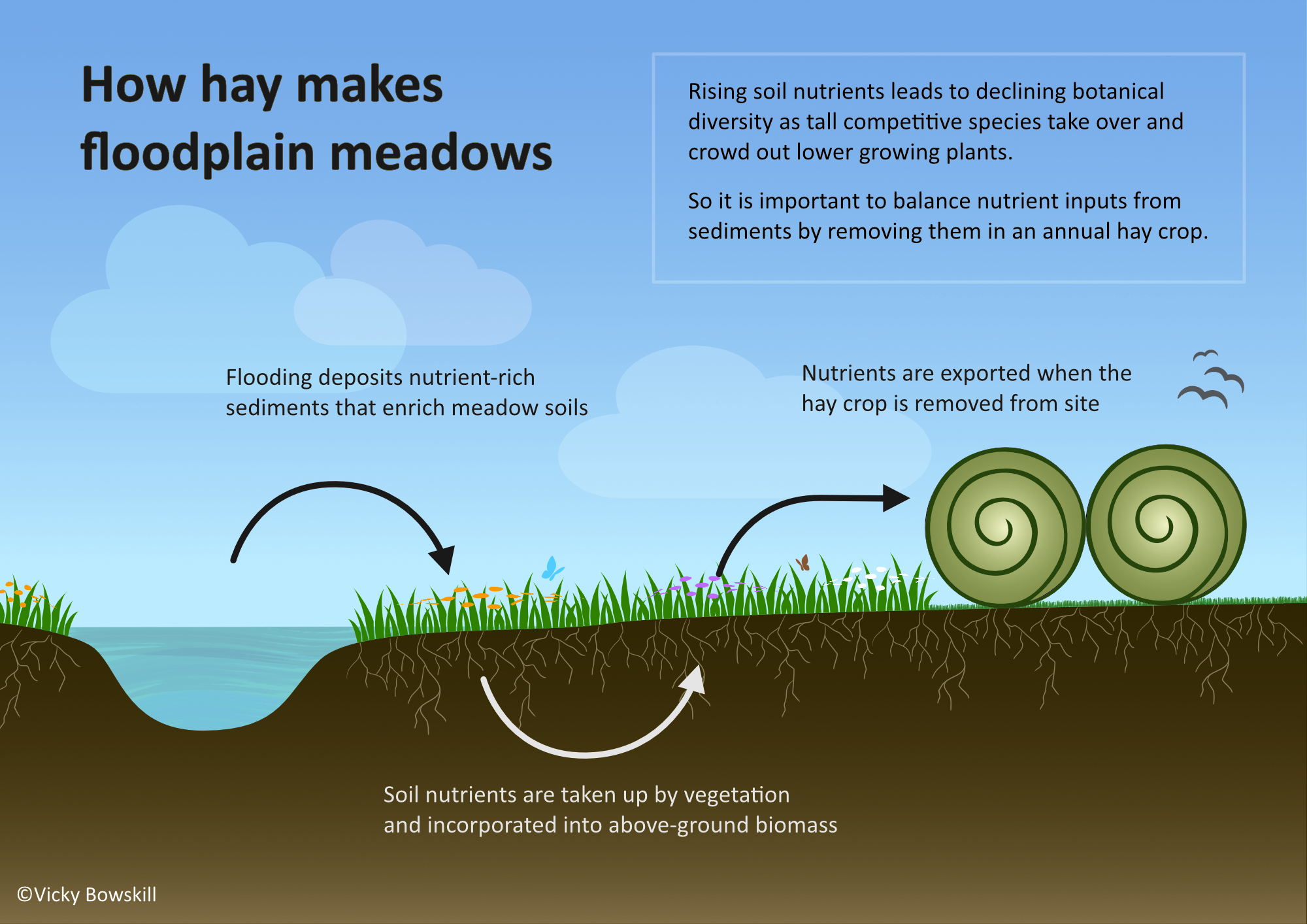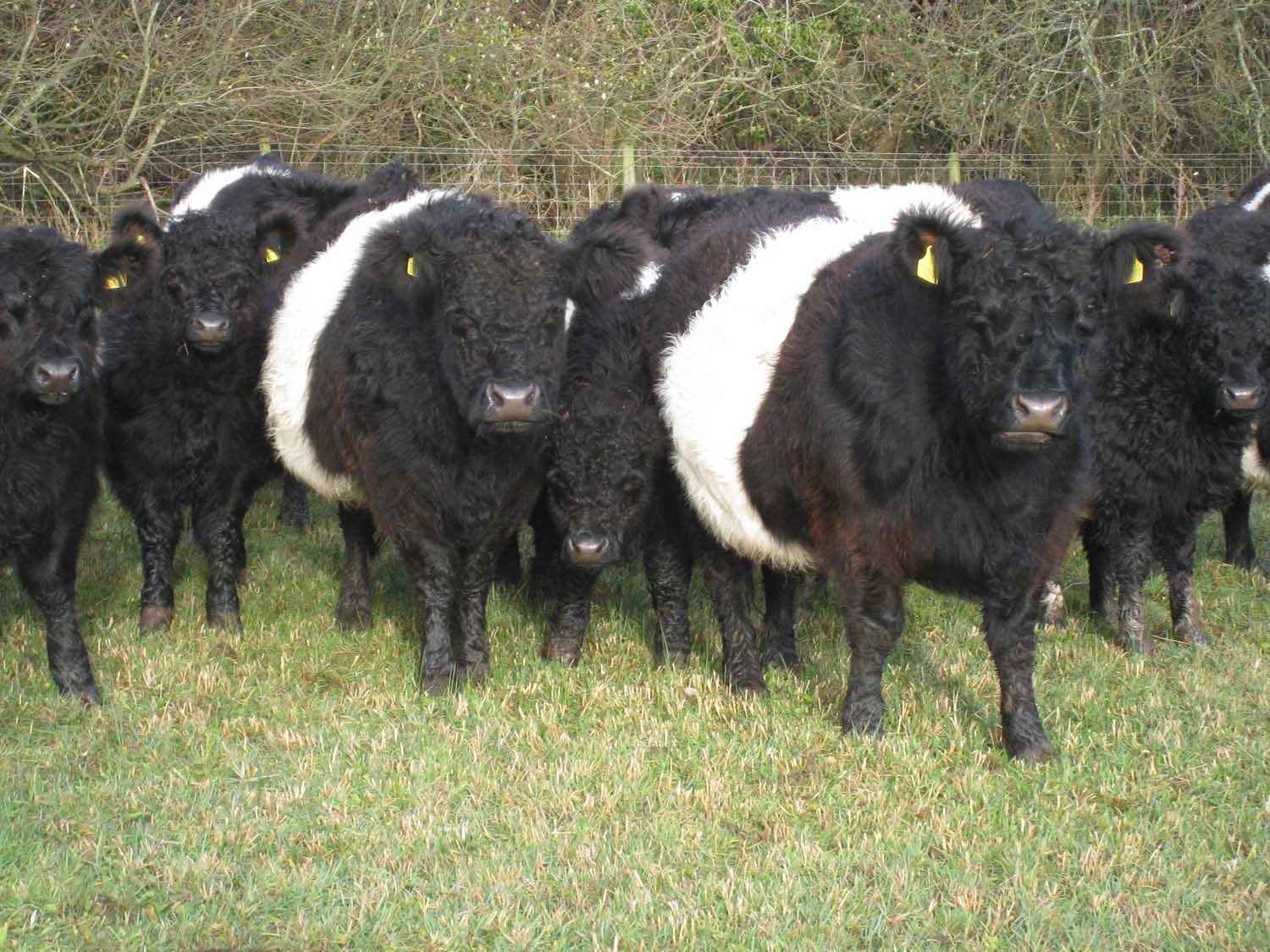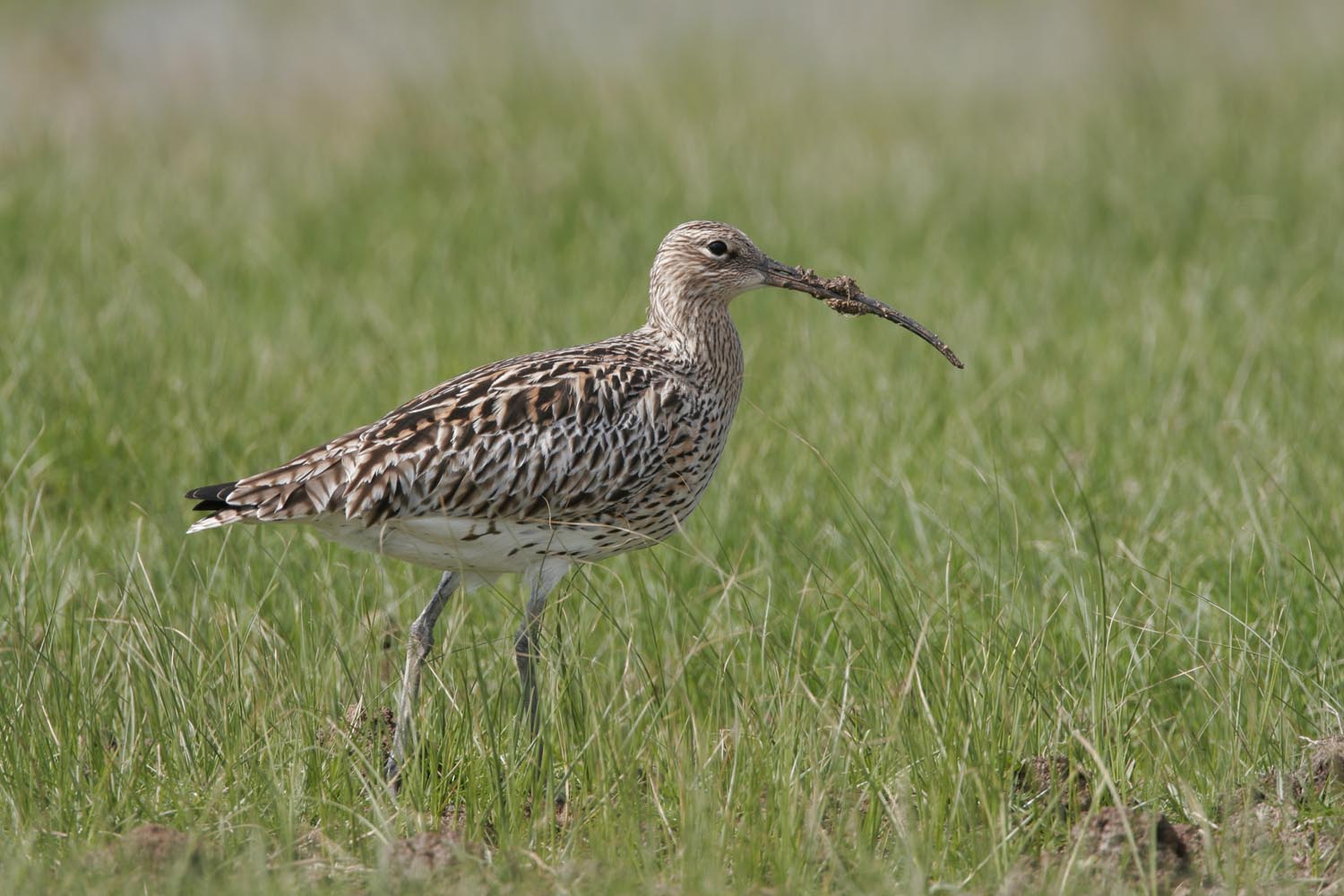Species rich floodplain meadows have been created through a long history of traditional agricultural management. This usually comprises an annual hay cut followed by aftermath grazing, along with maintenance of surface drainage infrastructure. These management activities, combined with a flooding regime produces the characteristic, species-rich, burnet-foxtail meadow community.
No artificial fertilisers or pesticides are required and whilst hay yields produced by managing in this way are lower than from intensively managed grasslands, floodplain meadow hay is highly nutritious, containing micronutrients and medicinal compounds essential for livestock health with the best quality hay produced from the richest plant communities.
Explore the key management requirements for maintaining a species-rich floodplain meadow below. (Please consult the statutory agency for nature conservation for your country if you wish to change management on a designated site).
- Annual hay cut
-
Most meadows are shut up in spring, then cut for hay when the grasses flower, usually between mid-June and mid-July.
For floodplain meadows a regular and timely hay cut is critical to maintain both hay quality and the diversity of wildflowers. This is because their soils receive nutrient inputs from flood-deposited silts which are then removed in the hay crop. If the amount of nutrients removed in the hay is reduced by leaving it to stand beyond its optimal cutting date (or by missing cuts entirely), then the nutrient status of the soil will rise, and meadows rapidly lose diversity, becoming dominated by tussocky grasses and tall herbs such as thistles and hogweed.

The timing of haymaking should respond to conditions in each year rather than being determined by specific dates, but the key point is that meadow hay needs to be cut when it is ready, i.e., at its most nutritious. Maintaining the quality of the hay crop for livestock like this, as was the traditional practice of farmers over generations, is the best way to maintain a species-rich meadow.
- Aftermath grazing
-
After the hay cut, floodplain meadows are grazed by cattle, horses, or sheep (known as 'aftermath grazing'). Grazing is important to create gaps in the sward for seedling establishment and suppress the growth of more competitive plants that are less palatable to livestock and can reduce the diversity of the meadow.
Grazing animals should be removed before the soil becomes wet enough for poaching to occur. This will prevent soil compaction which can reduce species richness. On drier sites, livestock can graze again in early spring before the meadow is shut up for hay in March/April.
For sites where aftermath grazing is impractical, a second hay cut can be taken in September if there is enough re-growth. In fact, early results from ongoing research have shown that if the summer cut is timed correctly and followed by a second cut in September, hay yields can be up to 62% higher compared to one cut in mid-summer.
 © Mike Dodd
© Mike Dodd
- Maintain drainage infrastructure
-
Regular maintenance of ditches, gutters, and surface drains helps remove floodwater efficiently and keep the soil aerated. This is vital for sustaining a diverse and productive meadow.
If a hay cut cannot be taken because a site is too wet, tall, coarse species tend to increase and smother the finer ones beneath. Over time this can result in the replacement of species-rich meadow communities with swamp vegetation which is better adapted to cope with waterlogged soil (and does not make for good hay).
- Maintain grazing infrastructure
-
Keeping fencing, stock handling and drinking points in good condition is important to ensure the site can be grazed following the hay cut. Maintenance of hedgerows to prevent scrub encroachment should also be part of floodplain meadow management.
- Managing for wildlife
-
Floodplain meadows can be a fantastic habitat for wildlife with a range of species (most notably invertebrates and birds) supported by the rich diversity of plants. Generally, the species present are either adapted to or relatively unaffected by hay-cutting and seasonal flooding. However, the development of more efficient farm machinery, means there is a risk of harm to some species during the hay cut. There is also sometimes a perceived conflict of interest between conserving plant diversity and managing for other wildlife. In practice, it should be possible to adapt your meadow management to ensure plant diversity is maintained while supporting animal populations. See the table below for management approaches for the benefit of different species groups.
 © Mike Dodd
© Mike Dodd
| Species group |
Management options |
Objective |
| Birds |
Carry out a breeding-bird survey in spring |
Identify if ground-nesting birds are using the site and mark locations |
| Birds, invertebrates, mammals |
Consider a staggered cutting pattern |
Avoid any nests until young have fledged. Rotationally cut some areas later to allow small mammals to escape and to provide invertebrate habitat for longer |
| Birds, invertebrates |
Rotate staggered cutting |
When there are breeding birds nesting, avoid nest sites, and avoid cutting the same areas at the same time every year |
| Birds, invertebrates, mammals |
OR consider cutting in a spiral pattern from the inside out if corncrake or curlew are present |
Allows fledgling birds, invertebrates, and small mammals to escape |
| Invertebrates |
Maintain margins and boundaries |
Irregularly cut areas contribute towards an overall habitat diversity in the landscape, which will benefit invertebrates |
| Invertebrates, mammals |
Leave uncut margins and fringes of vegetation alongside watercourses on a rotational basis |
Allow some margins to be left uncut, rotating between years |
| Invertebrates |
Consider type of livestock |
Beetle abundance was found to be higher in cattle-grazed swards than those grazed by sheep during an aftermath-grazing study (Woodcock et al. 2006) |